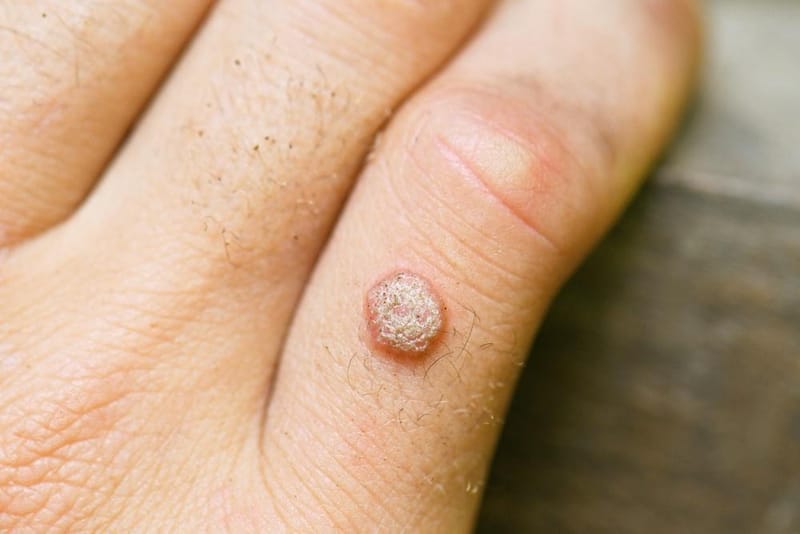Warts

What to Know About Treating Warts
TREATING WARTS AND MOLLUSCUM
Warts are a common skin infection. They are caused by the human papillomavirus (HPV). This virus gains entry to the skin through tiny breaks in the skin and lives in the outermost layer of the skin. Growth of the virus produces a bump with the characteristic rough, granular appearance. They are usually slightly lighter or darker than the color of the skin and sometimes have black dots in them. The dots are small clotted blood vessels at the base of the wart. Most often, warts appear on the hands and feet, but the virus can occur on any part of the body, including the face. An HPV vaccine has been developed which works by preventing the most common type of human papillomaviruses that cause cervical cancer and genital warts. The vaccine is recommended for preteen girls and boys at age 11 or 12 — before they become sexually active. Warts are not usually a major health concern. (The primary exception would be genital warts–see below). Eventually, they often will disappear on their own, although this can take years or even decades. Moreover, they can be painful when they occur on the hands and feet and can be embarrassing when they occur on visible parts of the body.
WHAT CAUSES WARTS AND HOW ARE THEY SPREAD?
As stated above, warts result from exposure to HPV virus. Unfortunately, this is a very common virus to which we are all frequently exposed. The virus is found on many common surfaces, such as shower floors. It is also shed from the surface of warts, explaining the contagious nature of warts and their ability to spread. Like most viruses, different people have different susceptibility to warts. Some people are, in fact, relatively immune and do not get warts. Other people get them frequently and severely. It is also believed that many children and young adults develop immunity to warts, which is why they are not as common among adult populations. Don't go barefoot in public places, especially in pools and locker rooms. Don't pick at warts or try to peel them off, as this will only spread the virus. Have separate nail clippers for healthy and infected areas. Try not to shave over warts. Try not to touch other people's warts.
WHAT ARE THE DIFFERENT KINDS OF WARTS?
The two most common kinds of warts are known as common warts and plantars warts. However, the HPV virus can also occur on the sexual organs and they are known as genital warts.
- Common warts—usually they appear near the fingernails and on the hand. Children and adolescents are most often affected. They most commonly appear where the skin is broken, such as where fingernails are bitten or picked.
- Plantars warts—or foot warts are usually on the soles of the feet. Unlike common warts, plantars warts are usually less bumpy because the pressure of walking, keeps them flat. Plantars warts can sometimes be painful, when pressured by movement in a shoe.
- Genital warts—occur in the genital area and on the sexual organs. Genital warts are considered to be a sexually transmitted disease. This is the only type of wart considered to be a serious health issue. This is because the HPV virus can develop into cervical cancer in women and (less commonly) into penile cancer in men. The HPV virus is responsible for at least 95 percent of cervical cancers. The HPV virus can also be transmitted to a newborn during birth.
HOW ARE WARTS TREATED?
Treatment is available...Come see the Dermatologist for specific treatment.


